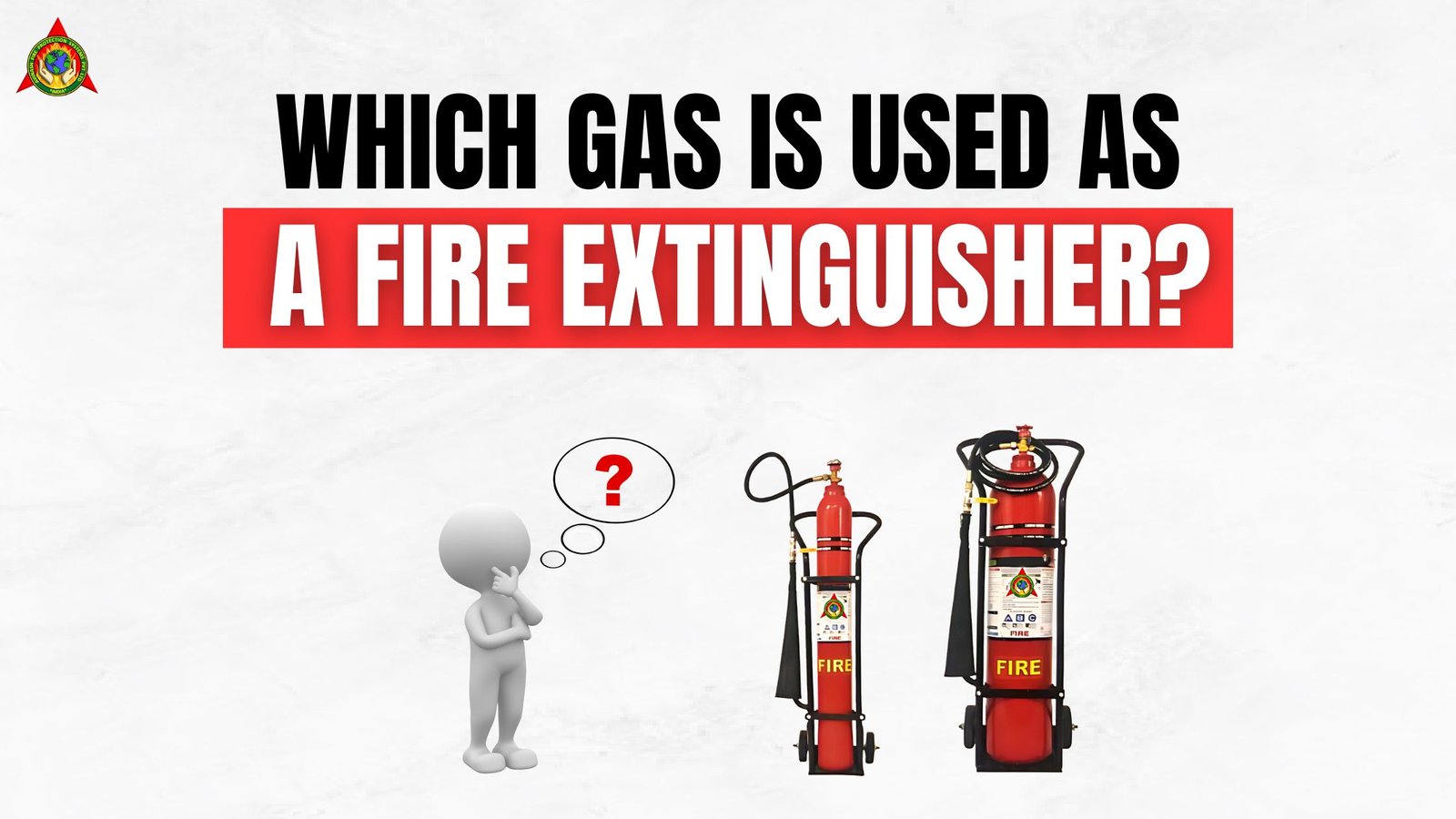Fire extinguishers are safety gadgets that are present in residential premises, workplaces, industrial facilities, and even cars. Everybody is familiar with the red canisters, but few are aware of what is put in them. Gas is one of the most effective fire extinguishing agents—but which gas is used as a fire extinguisher, and why?
This paper is going to talk about the different gases employed in fire suppression systems, their mode of action, well as the types of places where each type would be most effective. It is extremely handy to know how gases contribute to putting out fire whether you own a company and would like to make sure your workers are out of danger, or you are simply interested in it. In our previous blog we have talked about ABC Fire Extinguisher Powder Name, which helped our reader a lot, and this article will also help you to enhance your knowledge related to gases used in fire extinguishers.
Understanding Fire and Fire Suppression
What one needs to understand before proceeding to the types of gases is the basic chemistry of fire. Fire requires heat, fuel, and oxygen to exist: these are three components that form the so-called fire triangle. The fire suppression systems, such as gas-based extinguishers, act on eliminating at least one of these three components, usually oxygen or heat.
Which gas is used as a fire extinguisher? Main Gases Explained
There are various types of gases employed in fire extinguishing depending on the environment, type of fire, and safety factors. The most common ones include
1. Carbon Dioxide (CO₂)
The next and likely the most popular and widespread fire extinguisher gas, carbon dioxide, extinguishes fires by replacing the oxygen and cooling the fire, separating the fire triangle. CO₂ is most effective on Class B (flammable liquids) and C (electrical) fires.
Key Advantages:
- Leaves no residue, making it perfect for electrical equipment.
- Non-conductive and non-corrosive.
- Quick discharge and effective suppression
Common Uses:
- Server rooms
- Laboratorie
- Offices with electronics
Nevertheless, CO₂ is not the best in small or confined areas where there could be people because it can push out the breathable oxygen.
2. Clean Agent Gases (FM-200, Novec 1230)
The clean agents FM-200 (HFC-227ea) and Novec 1230 are gaseous fire suppression agents used in areas containing sensitive equipment, like data centers or museums.
How They Work:
These gases absorb the fire’s heat and disrupt the chemical reaction. They are not conductive to electricity, and they do not leave residue behind; hence, cleanup and damage are minimized.
Key Advantages:
- Not harmful to humans in populated locations.
- Acts quickly and effective on Class A, B, and C fires
- Alternatives that are environmentally friendly (e.g., Novec 1230).
Common Uses:
- Telecommunication facilitie
- Art galleries and archive
- Control rooms
3. Inert Gases (IG-55, IG-541, Argon, Nitrogen)
Inert gas systems involve the use of natural gases, including argon and nitrogen, or a mixture to repress fires by reducing the oxygen content beneath a particular proportion (~15%) that can support combustion.
How They Work:
They saturate the room and reduce oxygen levels to suffocate it but are safe to human beings in the short term.
Key Advantages:
- Environmentally friendly (zero ozone depletion potential
- Safe for electronics and sensitive area
- No toxic by-products
Common Uses:
- Archives and librarie
- Military and government facilitie
- Industrial environments
Why Use Gas-Based Fire Extinguishers?
There are some benefits of using gas-based extinguishers as compared to water- or foam-based systems, especially in and around electrical equipment or other valuable property. So the preference is given to numerous circumstances for them.
- Leave No Residue: Suitable in electronic and high-value surroundings
- Minimal Damage: No water or foam damage.
- Rapid Action: Gases can suppress fires within seconds.
- Human Safety: Clean agents and inert gases are designed to be safe for people when used properly.
Limitations to Consider
In spite of the advantages, gas-based extinguishers possess some shortcomings:
- Cost: Gas-based systems (such as FM-200 or Novec 1230) may be more costly
- Space Requirements: Inert gas systems usually entail huge storage tanks.
- Oxygen Displacement: CO₂ and non-reactive gases have the potential to cause suffocation in confined spaces under careless conditions.
Before having a gas-based suppression system installed, it is important to carry out a risk assessment so that it can be determined whether the system is suitable to your needs.
Conclusion: Choosing the Right Fire Extinguishing Gas
Then what gas is in a fire extinguisher? This question has an application-dependent answer.
- CO₂ is very effective and commonly used in electrical fires.
- Clean agents, such as FM-200 or Novec 1230, are better in places with sensitive electronics
- Inert gases such as nitrogen and argon provide safe and effective fire suppression in large, high-value infrastructure or archive facilities
Know your environment and risk of fire in it, and this will aid you in deciding on which gas-based extinguisher would be most suitable for you. All fire safety codes before selecting or installing fa firesuppression system should be taken with an expert in fire safety.
Key Takeaways
- CO₂ is the most common fire-extinguishing gas.
- Clean agents and inert gases are safer for sensitive or human-occupied environments.
- Each gas has its pros and cons depending on usage, cost, and safety.
Being aware of which gas is used as a fire extinguisher, you have some sort of an advantage to save your property, data, and people in case of an unpredicted fire scenario.


